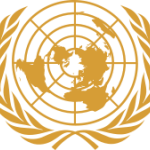- Sektör: NGO
- Number of terms: 31364
- Number of blossaries: 0
- Company Profile:
The United Nations Organization (UNO), or simply United Nations (UN), is an international organization whose stated aims are facilitating cooperation in international law, international security, economic development, social progress, human rights, and the achieving of world peace.
Costs connected with the actual or potential deterioration of natural assets due to economic activities. Such costs can be viewed from two different perspectives, namely as (a) costs caused, that is, costs associated with economic units actually or potentially causing environmental deterioration by their own activities or as (b) costs borne, that is, costs incurred by economic units independently of whether they have actually caused the environmental impacts. See also defensive environmental costs and damage cost.
Industry:Environment
Change in the salinity status of the soil. It can be caused by improper management of irrigation schemes, mainly in the arid and semiarid regions covering small areas or it may also occur if seawater or fossil saline groundwater intrudes in coastal regions or in closed basins with aquifers of different salt content when there is an excessive use of groundwater. It usually takes place where human activities lead to an increased evapotranspiration in soils on salt containing parent material or with saline groundwater.
Industry:Environment
Taxa of various types, including (a) taxa believed likely to move into the "endangered" category in the near future if the relevant causal factors continue to operate. These factors may include overexploitation, extensive destruction of habitat and other environmental disturbances, (b) taxa with populations that have been seriously depleted and whose ultimate security has not yet been assured and (c) taxa with populations that are still abundant but are under threat from severe adverse factors throughout their range.
Industry:Environment
Disease that arises from infected water and is transmitted when the water is used for drinking or cooking (for example, cholera or typhoid). It is to be distinguished from water-based and water-related diseases. Water-based diseases are those in which water provides the habitat for host organisms of parasites ingested (for example, schistosomiasis). Water-related diseases are those in which insect vectors rely on water as habitat but transmission is not through direct contact with water (for example, malaria or onchocerciasis).
Industry:Environment
Statistics that describe the state and trends of the environment, covering the media of the natural environment (air/climate, water, land/soil), the biota within the media, and human settlements. Environment statistics are integrative in nature, measuring human activities and natural events that affect the environment, the impacts of these activities and events, social responses to environmental impacts, and the quality and availability of natural assets. Broad definitions include environmental indicators, indices and accounting.
Industry:Environment
The SNA defines consumption of fixed capital as a cost of production in terms of the decline during the accounting period in the current value of the stock of fixed assets owned and used by a producer as a result of physical deterioration, normal obsolescence or normal accidental damage. It excludes damage from war or natural disasters accounted for as other volume changes in asset accounts. The SEEA extends the concept of capital consumption to natural capital in terms of depletion and degradation costs, i.e. imputed environmental cost.
Industry:Environment
Components of the cultural and natural environment that are of great national value and need to be preserved for the benefit of the community. Some components like the Great Barrier Reef belong to the global world heritage. Such components possess aesthetic, historical, scientific, social, cultural, ecological or other special values and include parks and reserves, beaches, coastlines, certain forests, rare species, buildings and gardens of special merit, sites of archaeological interest, museums and so forth. See also natural patrimony.
Industry:Environment
Expenditures incurred to mitigate or avoid the external costs of the general growth process of production and consumption. Defensive environmental cost are expenditures for preventing or neutralizing a decrease in environmental quality, as well as for compensating for or repairing negative effects (human health and welfare, and other damage to material systems) of environmental deterioration. Their deduction from NDP is sometimes suggested to obtain a measure of environmentally adjusted economic welfare. It is not recommended in the SEEA. See defensive environmental costs.
Industry:Environment
Materials that are not prime products (that is, products produced for the market) for which the generator has no further use in terms of his/her own purposes of production, transformation or consumption, and of which he/she wants to dispose. Wastes may be generated during the extraction of raw materials, the processing of raw materials into intermediate and final products, the consumption of final products, and other human activities. Residuals recycled or reused at the place of generation are excluded. See also biological waste, solid waste, industrial wastes and household waste.
Industry:Environment
Wearing away of the land by running water, rainfall, wind, ice or other geological agents, including such processes as detachment, entrainment, suspension, transportation and mass movement. Geologically, erosion is defined as the process that slowly shapes hillsides, allowing the formation of soil cover from the weathering of rocks and from alluvial and colluvial deposits. Erosion is often intensified by land-clearing human activities related to farming, resident and industrial development and it has as effect increasing run-offs, decline of arable layers, siltation in lakes, lagoons and oceans.
Industry:Environment
